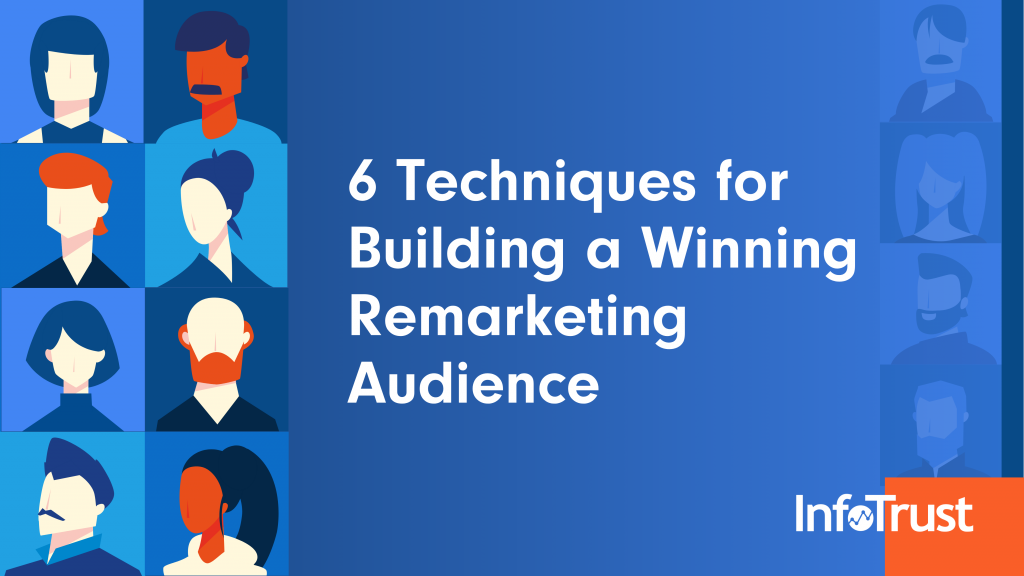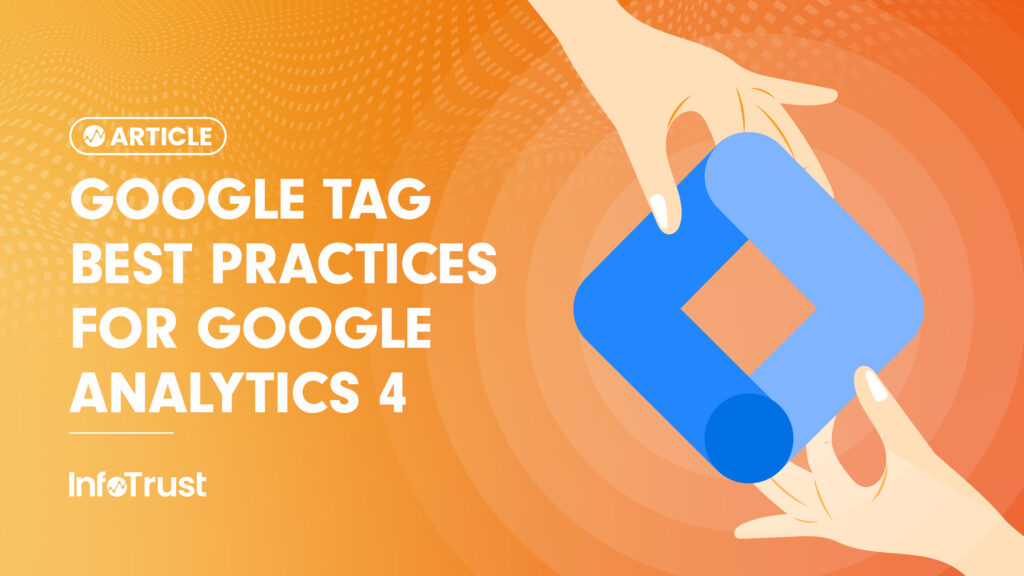Wouldn’t it be great to target the right person, at exactly the right time? As marketers, we hear how easy this should be—but where should we start? Finding a user who’s ready to convert can be challenging, and there isn’t one answer for every business, brand or website. Let’s take a step back from your daily campaigns and marketing and talk about a few tips for building a winning remarketing strategy.
These six tips will help businesses develop an audience strategy which guides users from interest to conversion. Whether you’re an eCommerce organization looking to drive purchases, a CPG company looking to enhance a users experience, or a news and/or media business looking for engaged users, these audience-building techniques can help.
1. Define Your Marketing Goals & Target Audience
Before you build an audience in any platform, think through who should be included. While this step might seem self-explanatory, it’s often overlooked. Think about what campaigns you’ll be running in the next 3-6 months (yes, think ahead, as audiences take time to get members). Who should see these ads you are going to put money towards?
A few things to consider to help you think about your ideal audience:
- Does your organization have customer personas? What do these users look like? Where are these users shopping? What are their interests outside of work?
- Which users are most engaged on your website?
- Are your current marketing campaigns leading to repeat customers?
- What actions on your website lead customers to conversion?
- Where are customers leaving your website today? Are you already trying to get those users back?
- Are all your advertising channels (email, social, paid media, etc.) driving towards the same part of the customer journey?
- What type of ads will you be running? (Brand awareness, purchase intent, informational, etc.)
- Do you have the data needed to remarket to high-value site visitors?
Once you’ve considered these questions, you can start to envision the type of campaigns you want to run, channels you should be using, and who should be the target audiences. Now you’re on your way!
Organizations interested in building audiences in Display and Video 360 should check out this article. Campaign Manager is also a great tool for building audiences; if you’re using CM have a look here. In this article, I’ll focus on tips outside these platforms
2. Build Your Audience Before Your Campaign
Audiences take time to grow and get members. For sites with high traffic volume, this won’t be an issue, but for niche audiences and smaller sites, your audiences lists could take some time to develop before they can be used in a remarketing campaign. Once you’ve defined who should be in the audience and how to build it, go ahead and build it.
If you use Google Analytics, Google Analytics 360, or Adobe Analytics, play around with the integration capabilities (integrations make sharing audiences easier).
3. Utilize website metrics (Google Analytics, Analytics 360, and Adobe Analytics)
Start by using the data you already have. Most organizations are using an analytics platform. Whether this is Google Analytics 360, Adobe Analytics, or another on-site analytics provider, find ways to use this data to build and share audiences.
Analytics platforms typically offer native or easy integrations with your advertising platforms; for example, Google Analytics 360 has a simple integration with Campaign Manager, Google Ads, Search Ads 360, and Display & Video 360. If you are not familiar with the native integrations in your analytics platform, take some time to see what’s available. (If you are not able to connect your analytics platform with the advertising platform, skip to No. 5 in this list for a cloud-based audience solution.)
Integrating a website analytics platform with your advertising platform allows you to build remarketing audiences based on website metrics (clicks, events, pages views, etc.). Plus, you can use a combination of website and advertising metrics (viewed an ad but never purchased).
Using your analytics platform, you can map user activities to specific audiences. For example, an eCommerce company may want to target users who added a product to their cart but never converted. News and media organizations may be interested in users who are engaging with their on-site videos frequently. CPG companies could target users who rate products or leave to purchase the product from a specific retailer. These are all perfect examples of audiences to build. Hopefully you’re already tracking some events you want your users to engage with; if so, then building the audience is likely the next step.
4. Develop Lookalike Audiences
Following the steps above, you’ve defined your ideal audience and started building it using website data. Once you pass the audience to the advertising platform, you can take advantage of lookalike audiences. This feature is available in most advertising platforms and allows the platform to find users who are similar to those in your current audience list.
Lookalike audiences allow you to reach users who might not have seen or visited your brand previously. They are added to your list because they exhibit behaviors, patterns, and lifestyles similar to those users who are in your active audience list. Lookalike audiences do not work for every campaign or business, so it’s best to test and see how they perform.
I’d recommend testing this audience using campaigns you know have been successful with your existing audience. One thing to keep in mind with these users is that they might not have heard of your brand before. This typically isn’t an issue, but it might require a few changes to the marketing copy you use.
I find that lookalike audiences work well for campaigns targeting users at the upper portion of the market funnel. Brands can then introduce themselves and talk about why they are amazing. Once the user has visited your site, then work on building audiences and campaigns to assist the user through your conversion funnel.
5. Utilize the Cloud For a Full Marketing View
Organizations typically use a variety of channels for marketing purposes, unfortunately the data doesn’t always live in one platform. There are a few ways to centralize this data, and all options provide additional audience-building opportunities.
Cost Data Import in Google Analytics
Spend and Return on Ad Spend (ROAS) are two important marketing metrics. They can also help organizations determine where they are gaining the most active on-site users. For organizations with the ability to import data into their platform, consider bringing in spend from your other digital channels. Typically you’ll pair source, medium, and campaign name/id with this spend data from the advertising platform. Once the spend is in your analytics platform, you can review ROAS compared to other marketing channels. You can also build audiences based on this information.
Cloud Warehousing
Facebook, Twitter, and Campaign Manager all offer API options to push data from their platform to a cloud warehouse such as Google Cloud, AWS, or Azure. They also offer the ability to pull data from cloud platforms. An integration with a cloud platform is an alternative to a cost data import.
Integrating multiple platforms to the cloud offers the ability for enhanced analysis, modeling, and audience creation. Cloud integrations allow businesses to use multiple platforms to understand the user journey. It also allows businesses to take internal data, such as from a CRM, and pair it with campaign data from multiple sources, like Facebook and Google Analytics. Combining this data builds a robust audience using key business micro conversion points. Once the audience is created, it can be pushed back to the respective platforms to be used for advertising.
6. Adapt for a Privacy-Forward Future
Privacy is a pressing topic, especially for advertising. All businesses should be thinking about the data they are collecting and how it’s being used. The days of targeting anyone who visits your website and leaves are quickly disappearing. GDPR put strict privacy policies in place for European Union residents, California’s CCPA is now being enforced, and many countries/states are quickly following the privacy forward trend.
Businesses are also jumping in on the privacy movement; Apple recently discontinued IDFA, which was widely used by many advertisers. The advertising industry is buzzing that Google, Adobe, and other larger publishers are likely to sunset similar IDs, such as the GAID. With these major changes it’s time to think beyond the Device ID and common retargeting techniques.
Build Raving Fans
Organizations will need to find ways to ensure their existing customers are happy and continue using their product or service. Websites with login capabilities can use account information, such as email addresses, but it won’t be that simple for all brands. Moving forward, organizations should put their customers’ privacy first while ensuring they are meeting customer expectations. How can your company build a loyal customer base that continually wants to come back?
Data Clean Rooms
One trend many companies are testing is using “data clean rooms,” like Google’s Ads Data Hub. Clean rooms allow businesses to combine their data, stored in the cloud, with the platform’s advertising data. With Ads Data Hub, Google masks certain customer-specific identifiers and doesn’t allow businesses to narrow down to a single user. Data clean rooms have extremely strict privacy regulations and are designed to protect the end user.
While that may seem scary, the clean room still allows marketers to run reporting on an aggregated level. Clean rooms also allow companies to build audience segments using their cloud data in combination with the clean room data. For Ads Data Hub, data can be exported at an aggregate level (as long as there are at least 50 users). From there, data can be passed to the respective advertising platform.
Questions about Your Audience-Building Strategy?
We understand that every business—and every marketing team—has unique challenges when it comes to developing their audience-building strategy. If you have specific questions, reach out the experienced web analytics consultants at InfoTrust today. As a certified Google Marketing Platform and Google Cloud Partner, InfoTrust can provide the strategic and technical support your marketing team needs.










